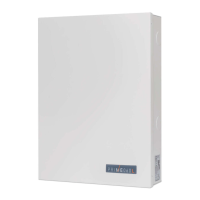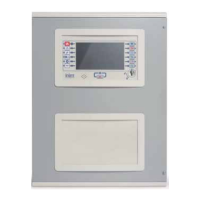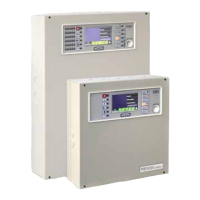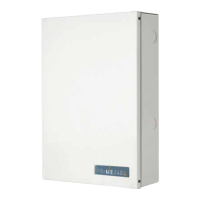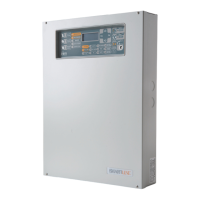66 Glossary
Anti-intrusion control panels
If you wish to carry out maintenance work on the control without generating false alarms
(tamper and intrusion), you must put the control panel in “Maintenance” mode. The control
panel in must also be in “Maintenance” mode during the keypad and reader addressing
process. The other functions of the control panel are still available (arm/disarm operations,
events, calls, etc.).
MAINTENANCE
An electrical output point connected to a signaling or control device activated/deactivated by
the control panel in response to programmed events.
The terminal the device is connected to must be configured as an “output”.
Outputs are usually connected to audible or visual signalling devices but can be used for
other purposes such as: switching on lights or opening doors/gates.
OUTPUT
This is the configuration of the activation mode of several outputs at the same time.
For each output, it is possible to set up the digital status (On - Off) or the analogue status (1
- 100 for dimmer type outputs and analogue expansion outputs).
The Prime control panel provides 50 output scenarios, each with a maximum of 10 outputs.
OUTPUT SCENARIOS
Signaling that may be associated with a state of emergency perceived by the user and
signaled to the intrusion control panel by means of a button or the activation of a shortcut.
This type of signalling generates an event which activates the programmed outputs and
calls. This type of signalling does not activate the red LEDs on the keypads and readers nor
is it visualized on the keypad displays.
PANIC
A group of zones.
A partition identifies a group of zones that belong to a spatial or logical portion of the
protected premises. For example, a partition may comprise all the zones that protect the
downstairs partition of a house (spatial partition), or all the entrances of an office building
(logical partition).
PARTITION
This refers to the status of a partition as requested by the user.
The user can carry out the following operations.
• Disarm - this operation disables the partition completely. In this way, none of the zones
belonging to the partition can generate alarms.
• Away mode - this operation enables the interior and perimeter zones of the partition. In this
way, all of the zones of the partition can generate alarms.
• Stay mode - this operation enables only the perimeter zones of the partition. In this way,
only the perimeter zones of the partition can generate alarms.
• Instant mode - this operation enables the perimeter zones only and annuls delays. In this
way, all the perimeter zones of the partition will generate instant alarms.
• Hold - this operation forces the partition to hold its current status.
PARTITION ARM/
DISARM OPERATIONS
A periodic inspection of the protected premises carried out by authorized security staff.
Patrol staff can disarm each partition for the pre-set time only (programmable separately for
each partition). The partitions concerned will rearm-as-before automatically when the pre-
set time expires. Persons involved in periodic security inspections require codes with the
"Patrol" attribute.
PATROL
A zone that monitors the entrance points of the protected building.
Perimeter zones are usually direct entrance points such as doors and windows. For example,
the front door of an apartment and windows that allow access from outside.
PERIMETER ZONE
Device for management and use of the system, external to the control panel.
These are devices connectible to the control panel by I-BUS as well as wireless devices.
Prime control panels manage the following peripherals on the IBUS:
• Keypads (Joy, nCode, Concept, Alien, Aria/HG)
• Proximity Readers (nBy)
• Expansions (Flex5)
• Transceiver (Air2-BS200)
• Sounder/flasher (Ivy-B)
• GSM dialer (Nexus)
• Isolators (IB200)
The following wireless devices can be added, and are recognized by the control panel as peripheral
devices:
• Keypads (Air2-Aria/W)
•Sounders (Air2-Hedera)
PERIPHERALS
The period (expressed in minutes) before an automatic arming operation.
For example, if a partition is set to arm automatically at 10:30 with a Pre-arm time of 5
minutes, all the partition keypads and readers will initiate an audible countdown at 10:25 in
order to warn users of the forthcoming arming operation.
Each partition can be programmed with its own Pre-arm time.
PRE-ARM TIME
The installation site.
Identifies the building or part protected by the intrusion control system, generally, a house
or office.
PREMISES
The primary source of electrical power to the system is normally @ 230V~ 50 Hz (115V60Hz
in some American states).
Usually connected to a switching power supply or transformer (depending on the model)
that provides the stabilized voltage to the system and the charge source to the batteries.
PRIMARY POWER
SOURCE

